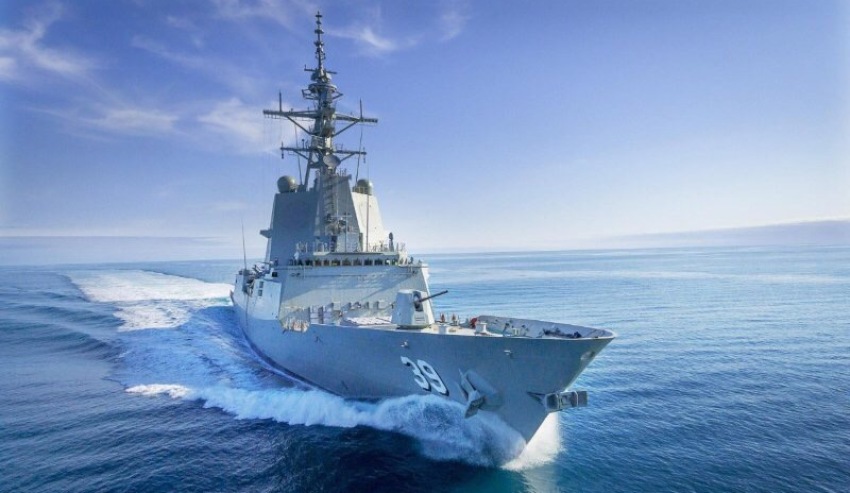
Yesterday, a review was announced into Australia’s defence posture and force structure. This is timely, necessary and may also provide a good foundation for a subsequent National Security #Strategy. Some thoughts on the review follow. 1/25 🧵 

2/ In December 1941, Prime Minister John Curtin wrote about the security challenges facing our country in an article called "The Task Ahead". He described the following year, 1942, as one in which there would be “an immense change in Australian life”. 

3/ Curtin wrote about “reshaping, in fact, revolutionising, of the Australian way of life until a war footing is attained quickly.” john.curtin.edu.au/pmportal/text/…
4/ In some respects, the national challenge that Curtin described in the bleak days of 1941 mirrors that confronting contemporary Australia. In Ukraine, the world has been shocked into the realisation that large scale war can still occur – in Europe and Asia.
5/ The Australian Defence review announced on Monday must deliver enhanced defence capabilities at a faster rate than we have done since the Second World War. What are key themes that might be important in this new Defence review? smh.com.au/politics/feder…
6/ First, time is of the essence. The review must be completed quickly (a five month turn around will be a record, if achieved) and every recommendation must be capable of implementation in the next 3-5 years. By the end of the decade at the latest.
7/ Second, the rapid development of an effective approach to deterrence with capabilities that the Chinese will fear is vital. There are those believe that nuclear submarines and B21 bombers are exactly what is needed.
8/ The reality is that these are champagne capabilities for a nation with a Bundaberg Rum budget. Inflation is having a major impact on purchasing power. And these will not be available to us this decade. We need capabilities in the short term.
9/ We need different, lower cost, asymmetric capabilities that deter the Chinese in the physical, diplomatic and information domains. Procurement of survivable, long-range strike missiles, launched from air, land and sea platforms, and built in Australia, will be vital. 

10/ While we have some useful crewed land, air and sea capabilities to do this, we will probably need to procure additional crewed systems as well as substantially expand the size of uncrewed (drone) systems. 







11/ Our nation needs swarms of these autonomous systems that can deny airspace, interdict maritime and subsurface platforms and operate across the many green bits of our region (also known as land).
12/ Our strategic deterrent must also include a large expansion in our capacity to generate influence beyond our shores, and our ability to work with regional allies and partners.
13/ Third, the ADF adoption of new and disruptive technologies must be accelerated. The Defence Science and Technology Group, while having made some significant contributions in its history, must be reformed to move more quickly. Also, the Defence #AI Centre is moribund.
14/ Defence needs a new approach to rapidly partner between Defence and industry to develop new technologies and absorb them into the ADF. The US Defence Advanced Research Project Agency is a good model. But perhaps a joint AUKUS DARPA might be even better.
15/ Fourth, we need to enhance our military and national resilience. Air and missile defence in the ADF is in a parlous state. We would be unable to defend most of our existing bases against missile or air attack, let alone our cities.
16/ At the same time, we are almost defenceless against autonomous systems. As Ukraine has shown, no country has effective defences against drones. This has to change, and quickly.
17/ Fifth, we need new and different mechanisms for thinking about national security and military operations. Government must foster a larger ecosystem of institutions outside Canberra to generate more diverse range of ideas warfighting, strategy, and defence policy.
18/ Sixth, Defence must take risk. Its processes, which are perfect for the slow, low tempo 1990s, are largely irrelevant to the current world. The primary driver in its current procurement and promotion processes is the total removal risk.
19/ This review gives the Minister the opportunity to provide a much broader appetite for risk tolerance, and for a ‘fail fast’ culture. Because, even in failure, we learn things.
20/ Finally, we must not assume that this review will predict every possible military scenario. Indeed, democracies have proven to be poor at predicting the exact form of the next war. Especially when fighting authoritarian regimes.
21/ While there are some, such as the Canberra anti-tank mafia, who believe they have perfect clarity about the next war, this is mistaken. The war in Ukraine has shown (again) that ambiguity and uncertainty are key features of the international system.
22/ The old idea of “fog of war” has new meaning in a world where we can access all the information we want - but still be none the wiser about what is really occurring.
23/ Because of this, we still need a range of lethal, networked, supportable and survivable air, land, sea, space and cyber capabilities (crewed and autonomous) so we can quickly adapt to a range of potential threats across the Indo-Pacific.
24/ The Defence review team has a massive task, to be completed quickly. They will not get everything right, given the limited time available.
25/ That is OK. But they must be given the latitude to challenge extant structures, basing, technologies - and most importantly, ideas - and propose rapid changes. The review has a very big ‘task ahead.’
• • •
Missing some Tweet in this thread? You can try to
force a refresh









